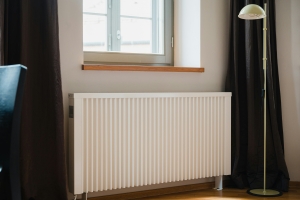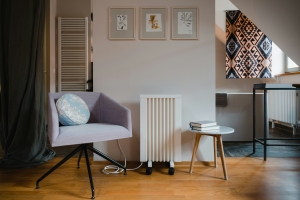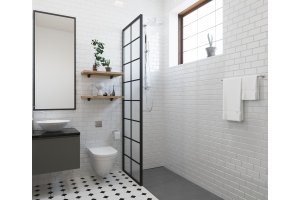Bleed a radiator in 7 Steps- Save Energy!
Have you ever tried to figure out if the radiators in your heating systems are working with FULL EFFICIENCY? They may be working fine but to answer the question of ‘efficiency’ you need to bleed a radiator- At least once a year, preferably at the start of the season. An efficient radiator is your gateway to saving energy and cutting out the hefty bills while keeping the cruel chills of the weather away from you.
Bleed a Radiator or Bleed a boiler?
To bleed a radiator is also called bleeding a boiler. The process involves letting out the entrapped air from your radiator body to defy the cold spots. These cold zones inside your radiator box arise mostly in un-vented heating systems. Due to hot water not being able to circulate around the radiator body, the efficiency levels fall.
Assessment Check: You can check this condition by touching the top and bottom part of your radiator. You’ll feel the top being less warmer than the bottom. If you hear a flowing, gurgling or clucking sound from your radiator, know that it is time to bleed your radiator. This situation rings the bells and calls for an immediate toolkit, otherwise, you might end up losing a big amount of energy.
Is it Easy To Bleed a Radiator?
The most often asked question is ‘how do you bleed a radiator’. The others: ‘Is it easy?’, ‘Is it safe?’, ‘Do I need a plumber to bleed a radiator?’, are also being addressed in the latter part of the blog. So, keep scrolling! Bleeding a radiator isn’t a hard nut to crack. A few steps can take you there and Voila! You have done bleeding your radiator at home. Yes you read that right. You can literally do it at your home by following the following steps.
How do you Bleed a Radiator?
Step#1: Fetch Radiator Bleed Toolkit
1- Radiator Bleed Key
It is the main tool that will help you bleed out that air from your radiator. It helps you open up the radiator vent valve. *FAQ Time! Wipe out your confusions about radiator keys:
a- Which type of radiator key do I need for my radiator?
First, you need to know that although there are different types of valves of radiators, there is a standard radiator key that can bleed any radiator valve type. Here is a video to let you know the various types of radiator valves available in the market.
Click Here: Valve Guide Video
b- Where do I find the best radiator keys?
The Best Radiator Keys are available at the same place where best UK radiators are stocked. Trade Plumbing it is! Refer to the attached screenshot. Every radiator listing at this online store comes with a ‘You Will Also Need Section’. And, the radiator key option is listed with it to save you from the hassle of finding Radiator Keys here and there on the internet market!
c- Is there any kind of radiator that doesn’t require bleeding?
Sadly, no radiator on earth is free from the problem of being free from bleeding. The best action is to buy a radiator key with a radiator you choose. They aren’t expensive. In the above screenshot you can see how low these brass radiator bleed keys cost. Other Radiator Accessories are also available in case you are looking for one.
2- Towel or a cloth
Fetch a towel or old cloth to keep away the mess dripping off while you bleed the radiator.
Step#2: Switch on the heating system
This is essential to build pressure in your radiator. The thrust will push the air out while warming up the radiator.
Step#3: Apply assessment checks to all Radiators
Take a tour of the whole house and look for the radiators that need bleeding. The checks are already explained above.
Step#4:Turn off your central heating system
If you’ll not turn it off, a big risk is going to accompany you in the following steps. Be cautious and handle the process with care.
Step#5:Prepare for the mess
You need to know that there is going to be colored water dripping out of the radiator valve once you initiate the bleeding process. If it’s your first time on how to bleed a radiator, you wouldn’t want to imagine the mess but be prepared. Spread some old clothes or towels around to save your carpet and floor.
Step#6: Insert the Radiator Bleed Key
Hold the radiator bleed key and insert it into the radiator valve. The location of the valve is variant for different radiator types, as evident from the above video. When your radiator key locks its square with the round of the radiator valve, it is time to rotate the valve. Step back a little. Which direction first? GO ANTI-CLOCKWISE! How much turn? A quarter to half would do the job well. Maintain a safe distance as the air being released might be hot and burn you. Pro-tip: If you don’t have a key, this process can be done via a screwdriver (flat-head) if you have a modern radiator.
Step#7:Bleed the radiator
Make sure you don’t give the key a full rotation. Once the air is out, water will follow and you don’t want that to happen. When the air stops coming out, and the water only remains, this is when you stop bleeding a radiator. Now, rotate the radiator key clockwise to tighten the valve. Repeat these steps on all radiators at your space, starting from ground level and moving upstairs (following the trend of air rising).
The Last Check! Now you are done bleeding a radiator. It’s time to repressurise your heating system to ensure smooth heating of on-ground and top-floor rooms. You’ll have to analyse the needle gauge on your boiler. If it is on a green pointer, all is well; If it is on yellow, there is still a job for you to do. The filling loop on your boiler has a tap formation that you can rotate to adjust the pressure. A typical residential home has a 1.0 to 1.5 bar pressure. Move the tap slowly to move the pointer needle to the green tag.
The chills of winters call for an efficient radiator system. Wise UK citizens consider bleeding their radiators prior to turning on their central heating systems. We are sure that now you can’t be worried about how to bleed a radiator as we have put in chunks of effort to bring you a precise informative writing to swipe away all your confusions. The best part is that bleeding a radiator is a golden path to cutting down energy bills in the heating season.
Looking for Something More? Wait, what? Don’t have a radiator yet? If you are planning to buy a radiatoror even considering replacement for an old radiator, here is where you can find your exact radiator match! From a diverse range of various types of radiators: designer and column radiators, modern and vintage styles, electric and dual fuels, you can choose any design and color of radiator online and strike that Buy button to experience what it feels like to have a perfect heating system. Worried about the prices? Ah, Don’t Be! Look at the BIG DISCOUNTS and our Price Match Guarantees. Did anyone say Quality? Look at the TrustPilot Reviews! We have made it all simple and transparent for you to make informed decisions. Feel free to roam around Trade Plumbing and pluck out what suits you!
 Sales & Support
Sales & Support  Open Mon - Fri 9am to 5.30pm
Open Mon - Fri 9am to 5.30pm



